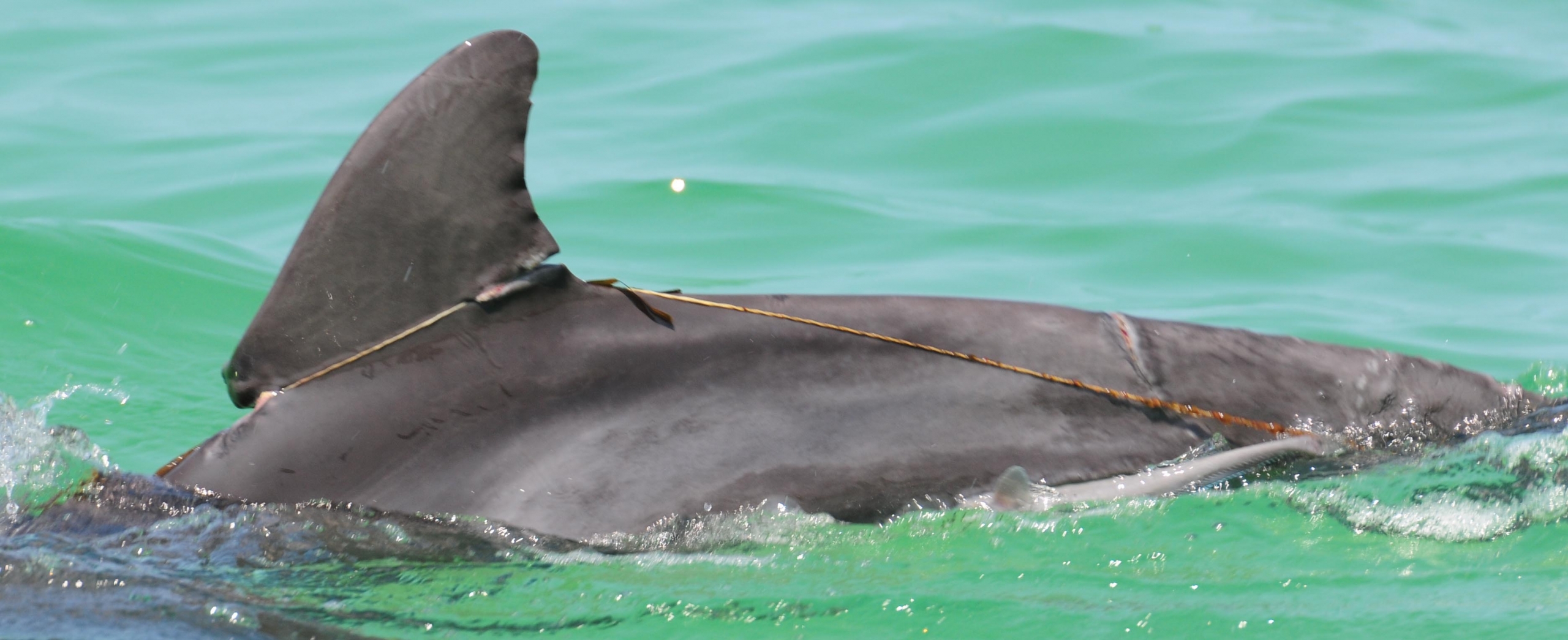Dolphins Need Your Help

Serious and even fatal dolphin injuries from interactions with recreational fishing gear and boats are on the rise. You can prevent injuries to dolphins and other sea life — and have a better day on the water — by following a few tips designed to protect marine animals. These “Best Practices” were developed by marine scientists and wildlife managers working with boaters, anglers, and fishing guides:
-
Never feed wild dolphins — it’s harmful and illegal
- Feeding teaches dolphins to beg for food and draws them dangerously close to fishing gear and boat propellers.
- Feeding is illegal under the federal Marine Mammal Protection Act.
-
Reuse or share leftover bait
- Freeze leftover bait for later or give it to your fishing neighbor.
- Dumping leftover bait may attract dolphins to fishing areas to beg or steal bait and catch.
-
Reel in your line if dolphins appear
- Reel in and wait for dolphins to pass to avoid losing your bait or catch and prevent potential harm to dolphins.
- Never cast toward dolphins.
-
Change locations if dolphins show interest in bait or catch
- Move away from dolphins to avoid unintentionally hooking one and prevent damage to gear or catch.
-
Release catch quietly away from dolphins when and where it is possible to do so without violating any state or federal fishing regulations
- Feeding or attempting to feed a marine mammal in the wild is prohibited.
-
Check gear and terminal tackle
- Inspect your gear often to avoid unwanted line breaks – even small amounts of gear in the water can be harmful to wildlife if entangled or ingested.
-
Use circle and corrodible hooks
- Circle hooks may reduce injuries to fish, dolphins, and sea turtles.
- Corrodible hooks (any hook other than stainless steel) eventually dissolve.
-
Stay at least 50 yards away
- Stay a safe distance from wild dolphins to avoid causing potential harm.
- Maintaining a safe distance helps keep dolphins wild.
-
Prevent wildlife entanglements
- Recycle fishing line
- Place all broken or used fishing line in a Monofilament Fishing Line Recycling Bin.
- If no recycling bins are available, place broken or used fishing line that has been cut into pieces in a lidded trash can.
-
Stash your trash
- Littering is illegal and can be harmful to wildlife.
- Collect any trash you’ve left behind and place it in a lidded trash can.
How We Help Wild Dolphins
We conduct the world’s longest-running study of a wild dolphin population. The long-term resident Sarasota community of about 170 dolphins inhabits the waters from the southern edge of Tampa Bay, southward to Venice Inlet, along the central west coast of Florida. Our unparalleled long-term datasets for individually identifiable dolphins and their ecosystem have established Sarasota Bay dolphins as a reference population for investigating at-risk populations of dolphins elsewhere.
For example, comparisons of health, survival, and reproductive success data between Sarasota Bay dolphins and those in Barataria Bay, Louisiana, played a crucial role in identifying the impacts of the Deepwater Horizon oil spill on dolphins. Our unique, ongoing long-term studies of local dolphins and their ecosystem are providing a new understanding of the impacts of red tide harmful algal blooms on dolphins, their shark predators, and the fish communities upon which they both depend.
This integrated approach to research leads to the SDRP being considered a model program and go-to source for information about bottlenose dolphins and their needs.
Our Program’s primary approach is to study individually identifiable bottlenose dolphins throughout their lives, documenting the changes that occur with life history milestones, and how individuals respond to the threats that they face, including those from humans.
For example, we engage, all too frequently, in dolphin disentanglement rescues along the central west coast of Florida in collaboration with other stranding network members. Characterizing the human dimensions, and learning and sharing how people can help (not harm) dolphins and their ecosystems, are important parts of our core mission.
The recognition of each dolphin as an individual neighbor with a well-documented, long-term history, including rescues and other dramas, gives us a conservation tool, as it helps people relate to their lives and needs, and understand that we all share the same neighborhood.




